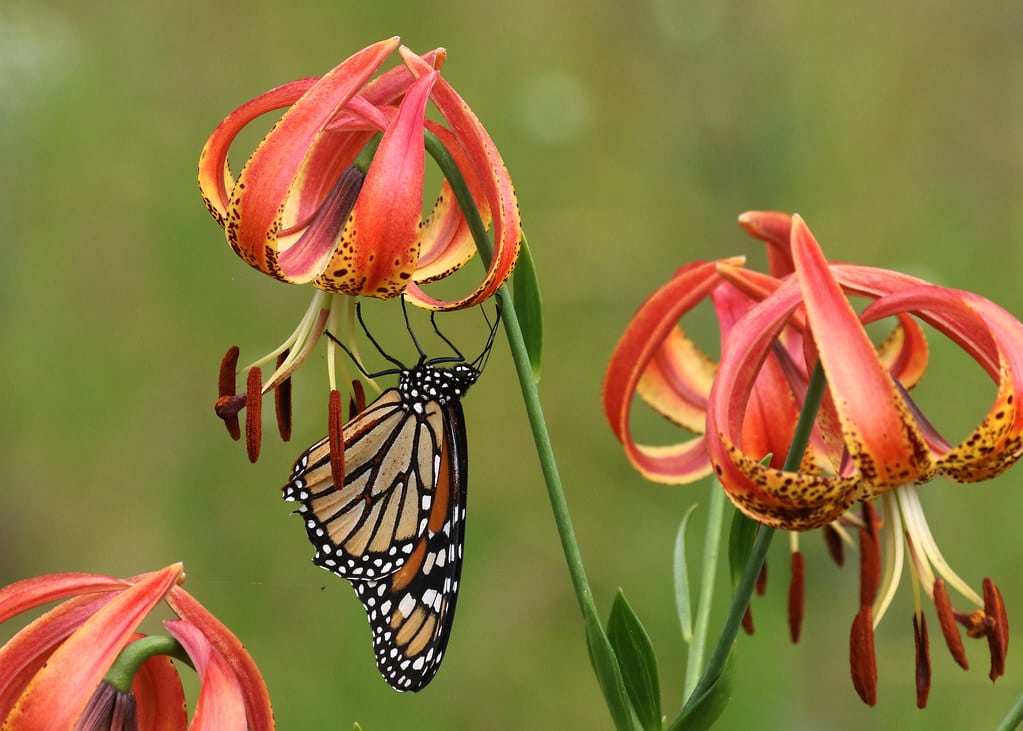

Join the Sandhills chapter of Three Rivers Land Trust on a socially-distanced guided tour of the Eastwood Preserve near West End, NC, to see an array of summer wildflowers and tour one of our recently protected tracts. Guides include Jeff Marcus of TNC, the Preserve steward, Crystal Cockman, Director of Conservation at TRLT, and botanist Bruce Sorrie.
The hike will take about one hour, and will start at 8 AM on Saturday, August 8th. To access the Preserve, meet at the intersection of Highway 73 and Beulah Hill Church Rd, about 3 miles west of the turn off of 73 from 15/501, and about 4 miles east of the intersection of highway 211 at West End.
Participants should wear long pants and long sleeve shirt and a sun hat. Hiking boots are ok, but rubber knee boots will make it easier to get down to where you can see the pitcher plants, sun dews, etc, Participants should bring plenty of water and bring sunscreen and insect repellent.
Face masks are required. Even though we can likely keep 6+ feet apart, there may be some crowding around to look at certain plants. If anyone is feeling sick or has any COVID symptoms (fever, shortness of breath, or cough), or has had direct contact with anyone who has tested positive for COVID in the past 14 days, please refrain from attending.
More about the Eastwood Preserve:
The Eastwood preserve is part of the NC Department of Agriculture & Consumer Services Plant Conservation Program. Last year, Three Rivers Land Trust added 15 acres to the Eastwood Preserve, bringing the total size to almost 400 acres.
Due to the sensitive nature of the species found on site, the site is only open to the public through workdays and guided tours offered by the NC Plant Conservation Program through a partnership with the Friends of Plant Conservation (FoPC), and private gatherings like this one!
This site is a significant natural heritage area as identified by the NC Natural Heritage Program, known primarily for its occurrence of the state-endangered Sandhills lily, which blooms for two weeks in early August. The lily is a relatively new species, discovered by long-time Moore County resident and botanist Bruce Sorrie around 20 years ago.
The lilies occur in a powerline right-of-way. The mowing and other management to keep the right-of-way free of trees mimics the disturbance from fire which would have historically maintained open-canopy habitats. The lily grows in wet, boggy places and is among a large suite of species that require open-canopy wetlands maintained by fire or other disturbance. On this field trip, in addition to Sandhills Lily, participants will also see the Carolina lily, orange-fringed orchid, purple pitcher plant, and pink sundew among other fascinating plants.
TRLT will also have copies of Bruce Sorrie’s Book, “A field guide to the wildflowers of the Sandhills Region: North Carolina, South Carolina, and Georgia” for sale before the event to raise funds for conservation in the Sandhills.

More about “Wildflowers of the Sandhills Region”:
Featuring over 600 wildflowers, flowering shrubs, and vines, this user-friendly field guide is the first to focus on the rare, fragile lands and species of the Sandhills region of the Carolinas and Georgia. Characterized by longleaf pine forests, rolling hills, abundant blackwater streams, several major rivers, and porous sandy soils, the Sandhills region stretches from Fayetteville, North Carolina, southwest to Columbus, Georgia, and represents the farthest advance of the Atlantic Ocean some 2 million years ago.
Wildflowers of the Sandhills Region is arranged by habitat, with color tabs to facilitate easy browsing of the nine different natural communities whose plants are described here. Bruce A. Sorrie, a botanist with over 30 years of experience, includes common plants, region-specific endemics, and local rarities, each with its own species description, and over 540 color photos for easy identification. The field guide’s opening section includes an introduction to the Sandhills region’s geology, soil types, and special relationship to fire ecology; an overview of rare species and present conservation efforts; a glossary and key to flower and leaf structures; and a listing of gardens, preserves, and parklands in the Sandhills region and nearby where wildflowers can be seen and appreciated. Wildflower enthusiasts and professional naturalists alike will find this comprehensive guide extremely useful.
THIS EVENT IS FULL! We hope you can join us for our next hike! If you have any questions, feel free to reach out to Ellie Daniels at ellie@threeriverslandtrust.org.